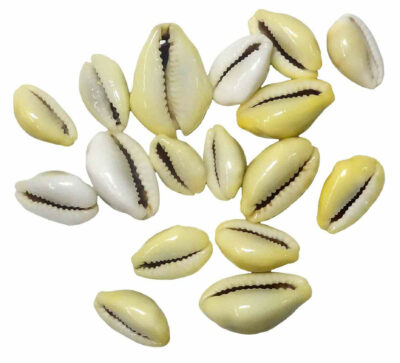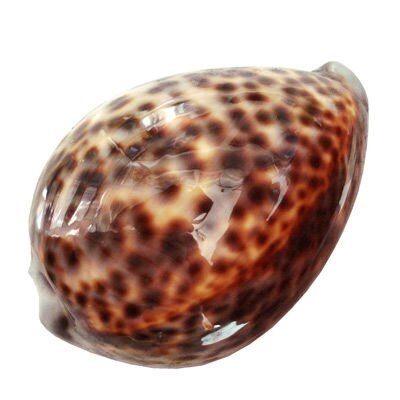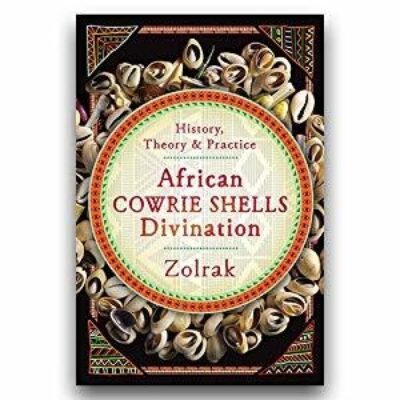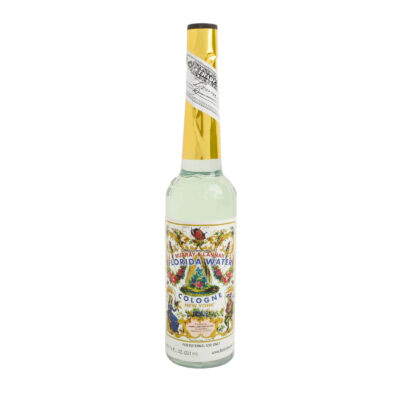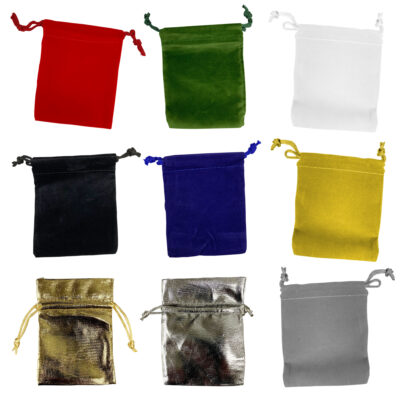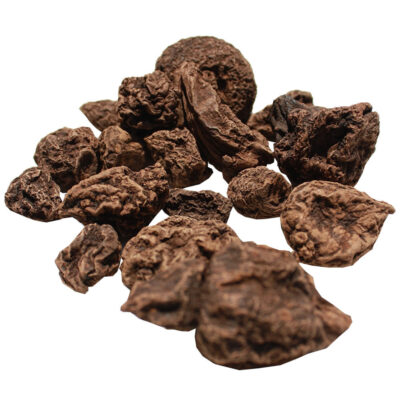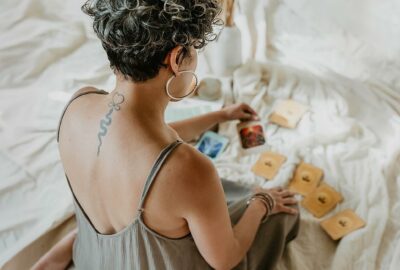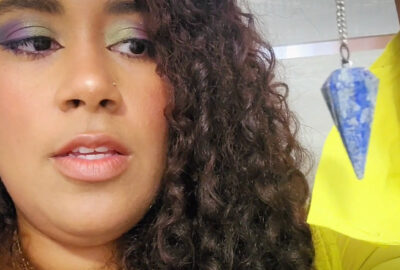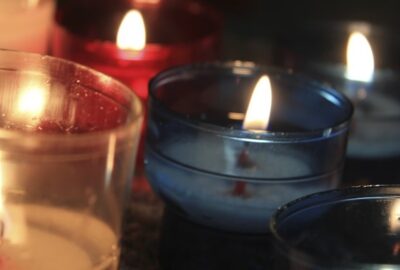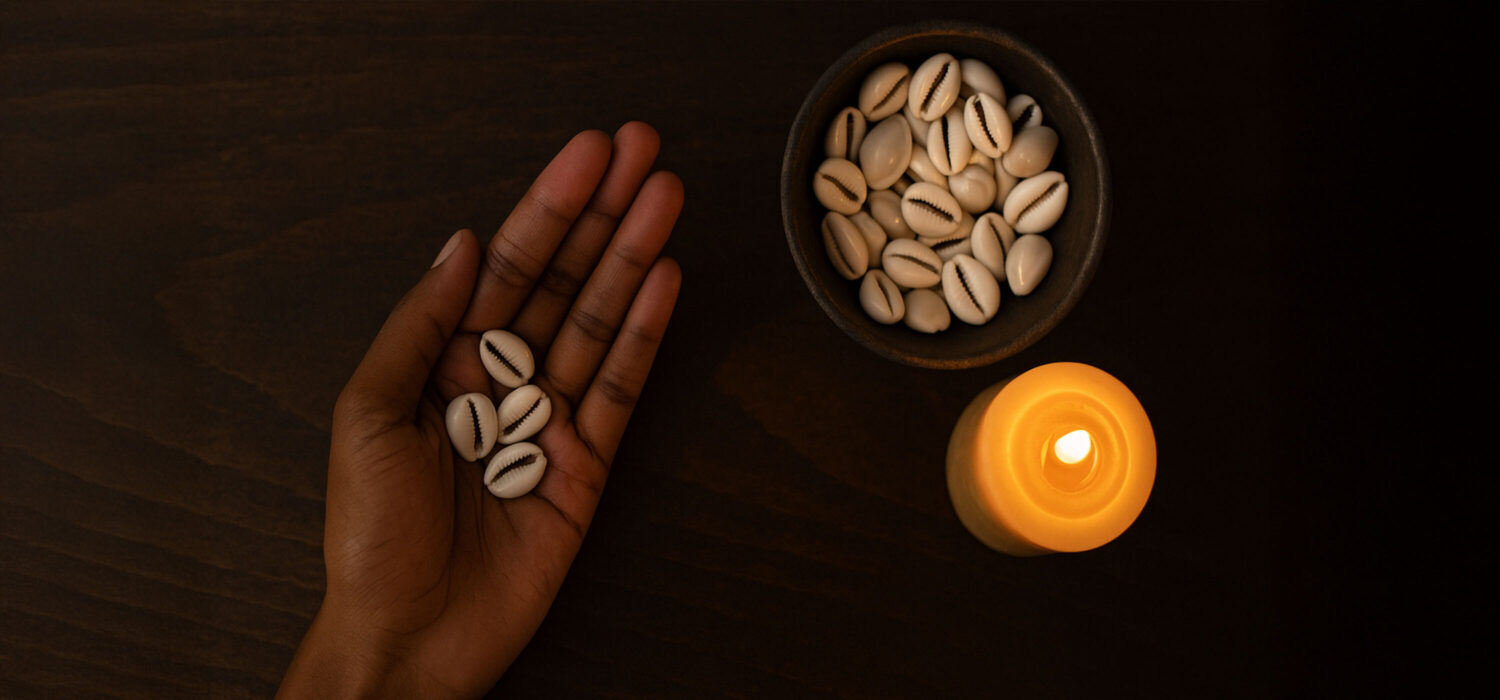
The Sacred Power of Cowrie Shell Divination
When life feels unclear and the path ahead uncertain, ancient wisdom often holds the answers. Cowrie shell divination is one of the most sacred and powerful practices used in Yoruba and Santeria traditions. More than a fortune-telling tool, it is a spiritual conversation with the Orishas and ancestral spirits, offering insight, guidance, and protection.
For generations, practitioners across West Africa, the Caribbean, South America, and beyond have turned to cowrie shells for clarity. Today, this tradition continues to help people navigate love, health, money, and emotional healing by unlocking the messages carried in each toss of the shell.
Brief History of Cowrie Shell Divination
Cowrie shell divination has roots in West African Yoruba religion, where it evolved as part of the Ifá and Orisha-based spiritual systems. Through the transatlantic slave trade, these traditions traveled to the Caribbean and the Americas, where they blended with Indigenous and Catholic beliefs to form Santeria, Candomblé, and other diasporic faiths.
Cowries were not just divinatory tools but sacred currency, both literal and spiritual. Over time, their use spread across continents, becoming a powerful symbol of protection, spiritual sight, and divine communication.
What Makes Cowrie Shells Spiritually Powerful?
Cowrie shells are more than beautiful sea treasures. They hold ancient significance. Once used as currency in parts of Africa, Asia, and India, these shells were valued for their form and energy. Their shape resembles both an eye and a womb, making them symbols of vision, fertility, intuition, and divine feminine energy.
In spiritual work, cowries are believed to serve as messengers. When consecrated and prayed over, they open a direct line to spiritual forces. The way the shells fall, mouth side up or down, reveals guidance on your past, present, and future.
Cowries are often found on altars, sewn into spiritual jewelry, or placed in mojo bags. Many spiritualists also pair them with powerful tools like High John the Conqueror Root, Van Van Oil, and Protection Amulets to deepen their rituals.
Obi Divination: Yes or No with Four Shells
One of the most accessible forms of cowrie shell reading is Obi divination. It is simple, direct, and perfect for everyday questions that require a yes or no answer.
Traditionally done with kola nuts, Obi is now often practiced using four cowrie shells. After asking your question and invoking the spirits, the shells are tossed onto a clean cloth. The way they land offers insight. Use Obi to gain confidence in small decisions or clarify your emotional direction.
How to Perform Obi Divination with Four Cowrie Shells
Obi divination is easy to learn and can be done at home with four cowrie shells. Here’s how to try it:
What You’ll Need:
- 4 clean cowrie shells
- A quiet, undisturbed space
- A spiritual cloth or mat to toss them on
- Florida Water or incense to cleanse the area
Step-by-Step:
- Cleanse your space and tools. Use incense smoke or Florida Water to spiritually clear your shells and mat.
- Focus your intention. Sit quietly and ask your question aloud or in your mind. Keep it simple and heartfelt.
- Toss the shells. Shake the cowries in your hands, then gently release them onto the cloth.
- Count how many shells land mouth-up (the open side). The combination will reveal one of five meanings.
Shell Interpretations:
- Four mouth-up (Alafia): Strong yes, blessings ahead.
- Three mouth-up (Etawa): Maybe or yes with conditions. Ask again.
- Two mouth-up (Ejife): Definite yes, balanced energy.
- One mouth-up (Okanran): No. There’s a block or resistance.
- Zero mouth-up (Oyekun): Strong no, with warning. Cleanse before trying again.
You can repeat the toss for clarity, but do not over-ask. Trust the first answer that feels right.

Three cowrie shells landing mouth-up signals a conditional yes or uncertain outcome. Ask again for clearer guidance.
Diloggun Divination: The Language of the Orishas
While Obi divination can be performed by most spiritual practitioners, Diloggun divination is a sacred practice reserved for initiated priests and priestesses, known as Olorishas, within the Santeria (Lucumí) tradition.
This advanced form of cowrie shell reading uses sixteen consecrated shells, which are ritually prepared through offerings and spiritual ceremonies. Each cast reveals a sacred pattern called an Odu, which carries rich stories, teachings, and messages from the Orishas.
There are 256 possible Odus, and each one provides layered insight into a person’s destiny, life path, and spiritual obstacles. A Diloggun reading is more than a forecast; it is a spiritual map guided by divine forces.
Because of its depth and sacred responsibility, Diloggun divination should only be performed by trained and initiated diviners. If you are seeking a reading at this level, it’s best to consult with a respected Santeria priest or priestess who has undergone the proper rituals and training.
Should You Include Rituals in Cowrie Divination?
While cowrie shell divination is primarily about receiving messages, many practitioners blend it with simple rituals to reinforce the guidance they receive. For example, after receiving a message of blockage, you may perform a cleansing. If the shells show a path to love, you might create an attraction spell.
Including small rituals can help you integrate the wisdom of the shells and align your energy with their message. Use items like Florida Water, Rue Soap, Money Drawing Candles, or a Red Mojo Bag to build a supportive spiritual routine.
Frequently Asked Questions About Cowrie Shell Divination
Here are some of the most common questions asked by people new to this practice:
Can I read cowrie shells if I’m not initiated?
Yes, Obi divination with four shells is accessible to anyone. However, Diloggun divination should only be done by trained Olorishas.
Do I need to cleanse my cowrie shells?
Yes. Always cleanse your shells before and after use with Florida Water, incense smoke, or salt water to keep them spiritually clear.
How often can I do a reading?
You can perform a basic shell reading as often as needed. If the question is serious or emotional, give it time before asking again.
What if I get a negative answer?
A negative answer is guidance, not punishment. It may be a sign to pause, realign, or perform a spiritual cleansing.
Can I use the same shells for rituals and divination?
It is best to keep divination shells separate from those used in spellwork. This keeps their energy focused and pure.
Where can I learn more about the Orishas?
You can explore our spiritual guides and browse tools connected to each Orisha to deepen your practice.
Let the Shells Speak
Cowrie shells are more than objects; they are sacred tools. With each toss, they bring the wisdom of ancestors, the voice of the Orishas, and the clarity your spirit seeks. Whether you're asking a yes or no question or seeking deep transformation, cowrie shell divination offers a trusted path.
Approach with reverence. Ask with honesty. Listen with your whole being.
And when you are ready, the shells will answer.
